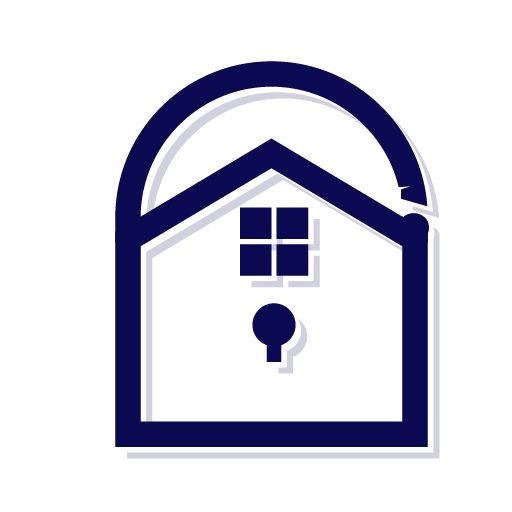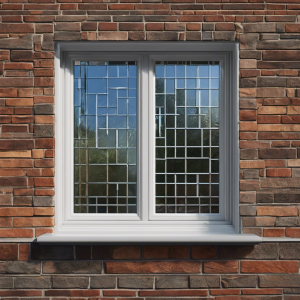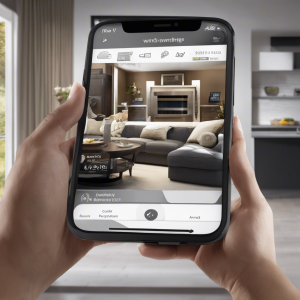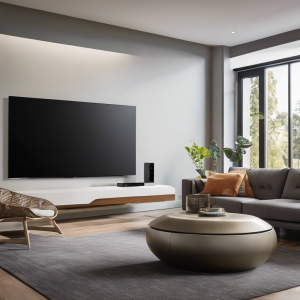With advancements in technology, smart home security systems have become more sophisticated and efficient than ever before. Integrating your security system with smart devices offers a multitude of benefits, from enhanced surveillance to remote monitoring and control capabilities.
But how do you choose the right smart devices for your home? And how can you seamlessly connect them to your security system?
In this discussion, we will explore the world of smart home security integration, uncovering the possibilities and offering valuable tips to maximize your home’s security potential.
So, whether you’re a tech-savvy homeowner or simply looking to enhance the safety of your living space, join us as we unravel the secrets of smart home security integration.
Benefits of Integrating Smart Devices
Integrating smart devices into a smart home security system offers numerous benefits to homeowners. One of the key advantages is the ability to cater to the needs of the elderly population. Smart devices for the elderly have become increasingly popular, as they provide an added layer of security and convenience. By incorporating these devices into a smart home security system, homeowners can ensure the safety and well-being of their elderly loved ones.
Smart devices for the elderly, such as motion sensors, bed sensors, and fall detectors, can be seamlessly integrated into a smart home security system. These devices can monitor the movements and activities of the elderly, alerting caregivers or family members in case of any unusual behavior or emergencies. For example, if an elderly person falls or is unable to get out of bed, the smart device can immediately send an alert to a designated contact, ensuring prompt assistance.
Furthermore, the compatibility of smart devices with various systems is an added advantage. Smart home security systems are designed to be compatible with a wide range of devices, allowing homeowners to choose the ones that best suit their needs. Whether it’s a smart lock, a video doorbell, or a surveillance camera, these devices can seamlessly integrate with the existing security system, providing a comprehensive and robust solution.
Choosing the Right Smart Devices
When selecting smart devices for a smart home security system, homeowners must carefully consider their specific needs and requirements. One important factor to consider is the ability to control the devices using voice commands. Voice command functionality allows homeowners to control their smart devices hands-free, providing convenience and ease of use. With voice command integration, homeowners can easily arm or disarm their security system, control the lights, adjust the thermostat, and even lock or unlock doors, all with a simple voice command. This not only enhances the overall user experience but also adds an extra layer of security by allowing homeowners to control their devices remotely.
Another crucial factor to consider when choosing smart devices for a smart home security system is energy efficiency. Smart devices, such as smart thermostats and smart light bulbs, are designed to optimize energy consumption by automatically adjusting settings based on occupancy and preferences. By incorporating energy-efficient smart devices into a home security system, homeowners can not only reduce their energy bills but also contribute to a more sustainable environment.
When selecting smart devices, it is important to look for devices that are compatible with the chosen smart home security system. Compatibility ensures seamless integration and allows homeowners to control and monitor all their smart devices through a single app or hub. Additionally, it is essential to consider the reliability and security of the devices. Homeowners should choose devices from reputable manufacturers that prioritize security and offer regular firmware updates to protect against potential vulnerabilities.
Connecting Your Security System to Smart Locks
To enhance the security of your smart home, it is important to connect your security system to smart locks. By integrating these two systems, you can ensure that your home is protected both physically and digitally. Connecting your security system to smart locks provides several benefits, including:
- Smart lock compatibility: Before installing smart locks, it is crucial to check if they are compatible with your security system. Different security systems may have varying integration capabilities with smart locks. Ensure that the smart lock you choose is compatible with your security system to ensure a seamless connection between the two.
- Increased convenience: Connecting your security system to smart locks allows for seamless control and monitoring of your home’s security. You can remotely lock or unlock your doors, grant temporary access to visitors, and receive real-time notifications whenever someone enters or exits your home. This convenience provides peace of mind and enhances the overall security of your smart home.
- Installation process: Integrating your security system with smart locks typically involves a straightforward installation process. Most smart locks are designed to be easily installed by homeowners, requiring minimal tools and technical knowledge. However, it is recommended to follow the manufacturer’s instructions or seek professional assistance for a proper and secure installation.
Enhancing Surveillance With Smart Cameras
Video analytics refers to the process of analyzing video footage to extract meaningful information. It can help in detecting suspicious activities, identifying objects or people, and providing real-time alerts. By using video analytics, smart cameras can automatically analyze the video feed and detect unusual behavior or unauthorized access, allowing homeowners to take immediate action.
Facial recognition is another powerful feature offered by smart cameras. It enables the system to identify and verify individuals based on their facial features. This can be particularly useful for ensuring only authorized individuals have access to the home. For example, a smart camera integrated with facial recognition technology can identify known individuals and automatically unlock the front door for them, while alerting the homeowner if an unrecognized face is detected.
Smart cameras can also be programmed to send notifications or alerts to homeowners’ mobile devices whenever motion is detected or specific events occur. This allows homeowners to monitor their property remotely and take necessary actions if any security breach is detected.
Furthermore, these cameras can be integrated with other smart devices in the home security system, such as smart locks and alarms, to provide a comprehensive security solution. For instance, when a smart camera detects suspicious activity, it can trigger the smart alarm to sound and simultaneously lock all the smart locks in the house.
Maximizing Security With Motion Sensors
Motion sensors are a crucial component in maximizing the security of a smart home system. These devices play a vital role in detecting any movement within the home or its surroundings and triggering appropriate actions. When integrated with a smart home security system, motion sensors provide an additional layer of protection against potential threats.
Here are three key benefits of using motion sensors in a smart home security setup:
- Enhanced detection capabilities: Motion sensors utilize advanced technology to detect even the slightest movement within their range. Whether it’s an intruder attempting to break into your home or a pet roaming around, these sensors are designed to differentiate between different types of motion and provide accurate alerts. With wireless options available, motion sensors can be easily installed in any desired location, enabling comprehensive coverage of your property.
- Reduced false alarms: One common concern with motion sensors is the possibility of false alarms. However, advancements in technology have significantly minimized this issue. Modern motion sensors are equipped with intelligent algorithms and advanced detection mechanisms, ensuring that they only trigger alarms when there is a genuine threat. This helps prevent unnecessary panic or inconvenience caused by false alerts.
- Customizable settings: Motion sensors offer a range of customizable settings to suit individual preferences. Users can adjust the sensitivity level, detection range, and even set specific timeframes for when the sensors should be active. This flexibility allows homeowners to tailor their smart home security system to their specific needs, ensuring optimal performance and minimizing the risk of false alarms.
Remote Monitoring and Control Capabilities
With the advancement of smart home technology, homeowners now have the convenience of remotely monitoring and controlling their home security systems. This remote monitoring and control capability provides an added layer of security and peace of mind, allowing homeowners to keep an eye on their property and make adjustments as needed, even when they are not at home.
One of the benefits of remote monitoring and control is the ability to monitor energy efficiency. Smart home security systems can provide real-time data on energy consumption, allowing homeowners to identify areas where energy is being wasted and make necessary adjustments. For example, if a homeowner notices that their security system is using excessive energy during certain times of the day, they can adjust the settings to optimize energy usage and reduce costs.
Voice control is another key feature of remote monitoring and control capabilities. With voice control integration, homeowners can easily control their security system using voice commands, making it even more convenient and user-friendly. This hands-free approach to managing the security system allows homeowners to easily arm or disarm the system, adjust settings, and receive real-time notifications, all without having to physically interact with a control panel or mobile app.
Tips for Seamless Integration
To ensure a smooth integration of remote monitoring and control capabilities in smart home security systems, homeowners should consider the following tips:
- Choose compatible devices: When it comes to smart home automation, compatibility is key. Before purchasing any smart devices, homeowners should ensure that they are compatible with their existing security system. This can save time and frustration down the line, as incompatible devices may not work together or may require additional troubleshooting.
- Plan the network infrastructure: A well-planned network infrastructure is crucial for seamless integration. Homeowners should consider the placement of their Wi-Fi router and ensure that it provides adequate coverage throughout the house. Additionally, they should ensure that their smart devices are connected to the same network for easy communication and control.
- Stay up-to-date with firmware updates: Smart devices often receive firmware updates to improve functionality and address security vulnerabilities. Homeowners should regularly check for updates and install them promptly to ensure optimal performance and security. Neglecting to update firmware can lead to compatibility issues and potential vulnerabilities in the home security system.
Frequently Asked Questions
Are Smart Devices Compatible With All Types of Security Systems?
Smart devices are increasingly being integrated with various security systems, offering enhanced convenience and control.
Compatibility between smart devices and security systems depends on the specific models and manufacturers involved. While most modern security systems can be integrated with smart devices, it is important to check for compatibility before making a purchase.
The benefits of integrating smart devices with security systems include remote access and control, real-time notifications, and improved automation capabilities, making it easier for homeowners to monitor and manage their home security.
Can Integrating Smart Devices Compromise the Security of My Home?
Integrating smart devices into a home security system can potentially compromise the overall security of a home. There are several risks and vulnerabilities associated with this integration, including the potential for unauthorized access to the devices or network, data breaches, and vulnerabilities in the smart devices themselves.
Homeowners can mitigate these risks by ensuring they choose reputable smart devices, regularly updating firmware and software, using strong passwords, and implementing additional security measures such as network segmentation and encryption.
How Do I Ensure the Privacy and Protection of My Data When Using Smart Devices?
Data privacy concerns are a crucial aspect to consider when using smart devices. To ensure the privacy and protection of your data, it is essential to follow best practices for securing smart devices.
This includes regularly updating device firmware, using strong and unique passwords, and enabling two-factor authentication. Additionally, carefully reviewing and adjusting privacy settings for each device can help minimize the risk of data breaches.
Taking these precautions will enhance the security of your personal information and safeguard against potential privacy risks.
What Are Some Common Challenges or Issues That May Arise When Integrating Smart Devices With a Security System?
Integrating smart devices with a security system can present several challenges and common issues. These include compatibility problems between devices and the security system, network connectivity issues, and potential vulnerabilities in the smart devices themselves that could be exploited by hackers.
Additionally, there may be difficulties in configuring and managing multiple devices within the system, as well as ensuring proper communication and synchronization between them.
Overcoming these challenges requires careful planning, thorough testing, and implementing robust security measures.
Can I Control and Monitor My Smart Devices Remotely When I Am Away From Home?
Yes, it is possible to control and monitor smart devices remotely when you are away from home.
With the advancement of technology, smart home security systems now offer remote access and remote monitoring capabilities.
This means that you can use your smartphone or computer to control and monitor your smart devices from anywhere in the world.
Whether you want to check your security cameras, lock or unlock doors, or adjust the temperature, remote access allows you to do so conveniently and securely.



